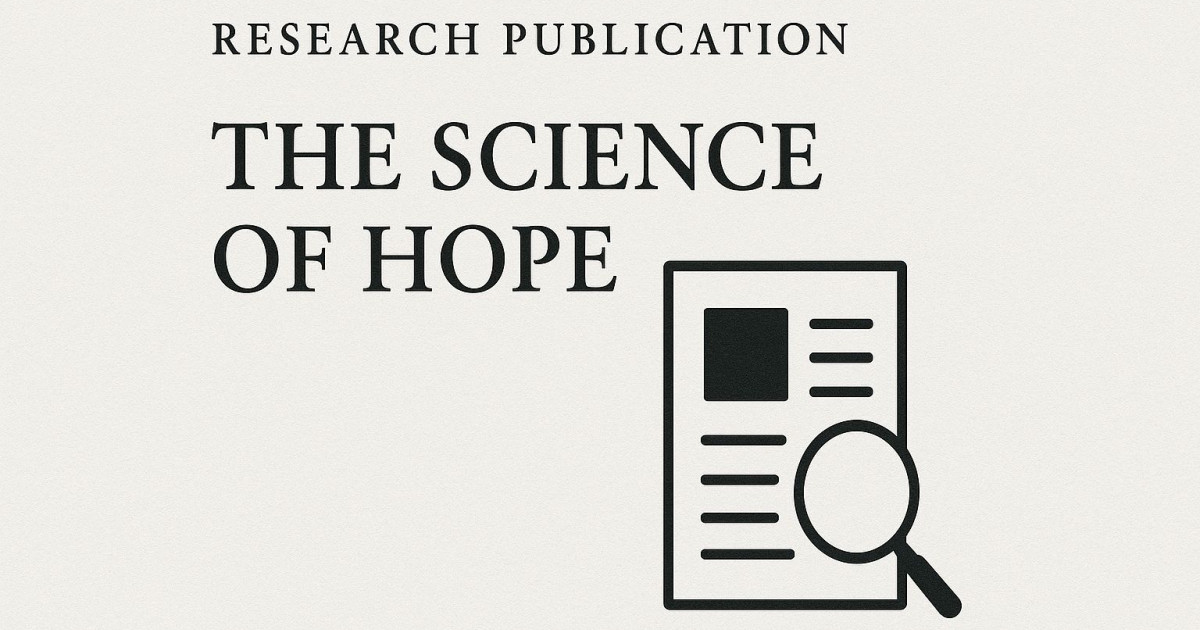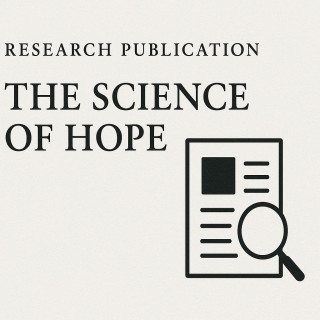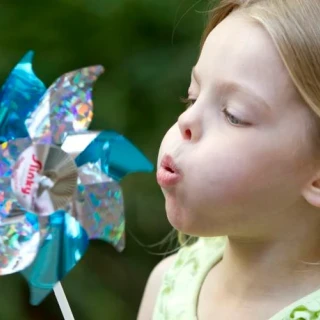American Psychological Association Publication | Adverse Childhood Experiences, PTSD, and the Science of Hope

Adverse Childhood Experiences, PTSD, and the Science of Hope
Trauma leaves deep marks on both memory and mind. For those who have endured adverse childhood experiences (ACEs)—such as abuse, neglect, or growing up in chaotic households—the aftereffects often extend well into adulthood. These early experiences are closely linked to posttraumatic stress disorder (PTSD), anxiety, and other forms of psychological distress. Yet amid this adversity, one factor consistently emerges as a protective strength: hope.
A recent study examined how ACEs influence hope through the mediating roles of PTSD and anxiety. By surveying 180 homeless individuals—a population disproportionately affected by early trauma—the researchers sought to understand not just the existence of trauma’s impact, but the mechanisms behind it. Their findings provide both sobering insights and a roadmap for fostering resilience through the science of hope.
How Trauma Hijacks Attention
The research team drew on Snyder’s Hope Theory, which defines hope as the combination of agency (the belief “I can do this”) and pathways thinking (the ability to see ways forward). Hope requires mental energy devoted to identifying goals and strategies to reach them.
But trauma disrupts this process. PTSD symptoms—flashbacks, intrusive memories, emotional flooding—become what Snyder called “attention robbers.” Instead of focusing on future goals, survivors’ attention is consumed by the past. This cycle heightens anxiety, leaving fewer cognitive resources for hopeful thinking.
The study confirmed this pathway:
Adverse Childhood Experiences (ACEs) predicted higher levels of PTSD symptoms.
PTSD symptoms strongly predicted increased anxiety.
Anxiety was directly linked to lower levels of hope.
This sequential relationship was visualized in the structural model shown on page 4 of the report, where ACEs feed into PTSD, which drives anxiety, ultimately diminishing hope.
Why Hope Matters
Hope is more than optimism—it is a measurable psychological strength that drives resilience, empowerment, and well-being. Higher levels of hope have been tied to stronger coping skills, greater life satisfaction, and even improved physical health. For trauma survivors, hope is not simply a comfort; it is a vital pathway to recovery.
The study shows that when trauma memories monopolize attention, survivors struggle to imagine or pursue future goals. Anxiety compounds this effect by eroding the sense of control needed to sustain agency. Without hope, pathways narrow and motivation declines.
Implications for Healing and Practice
This research highlights several practical applications for those working in mental health, social services, and community programs:
Targeting Attention Control: Interventions should help survivors redirect attention away from intrusive memories and toward future-oriented goals. Techniques such as mindfulness and meditation can strengthen attentional control, reducing the power of trauma’s “attention robbers.”
Hope-Based Therapy: Programs grounded in hope theory can guide clients in developing concrete goals, building multiple pathways to reach them, and nurturing agency. This approach reframes healing not as erasing trauma, but as reclaiming the ability to imagine and pursue a different future.
Integrating Mindfulness and Hope: Early research combining meditation practices with hope-focused interventions shows promise. By learning to manage attention in the present moment, survivors may free up cognitive space to plan, problem-solve, and dream again.
The Science of Hope in Action
The findings remind us that hope is not fragile—it is teachable and cultivable. Even when trauma and anxiety feel overwhelming, interventions designed to enhance hope can help survivors rebuild their lives.
For policymakers, practitioners, and community leaders, the lesson is clear: tackling trauma is not only about reducing symptoms. It is about creating environments, practices, and relationships that expand the capacity for hope. By strengthening agency and pathways thinking, we equip individuals to move beyond survival into growth and thriving.
Conclusion
The study’s conclusion is both challenging and inspiring: adverse childhood experiences and PTSD shape anxiety in ways that diminish hope, but this pathway is not fixed. By addressing the mechanisms that rob attention and by deliberately cultivating hope, we can intervene in the cycle of trauma.
Hope does not deny the reality of the past—it illuminates the possibility of the future. And as the science shows, nurturing hope may be one of the most powerful tools we have to help survivors of trauma reclaim their agency, resilience, and lives.


